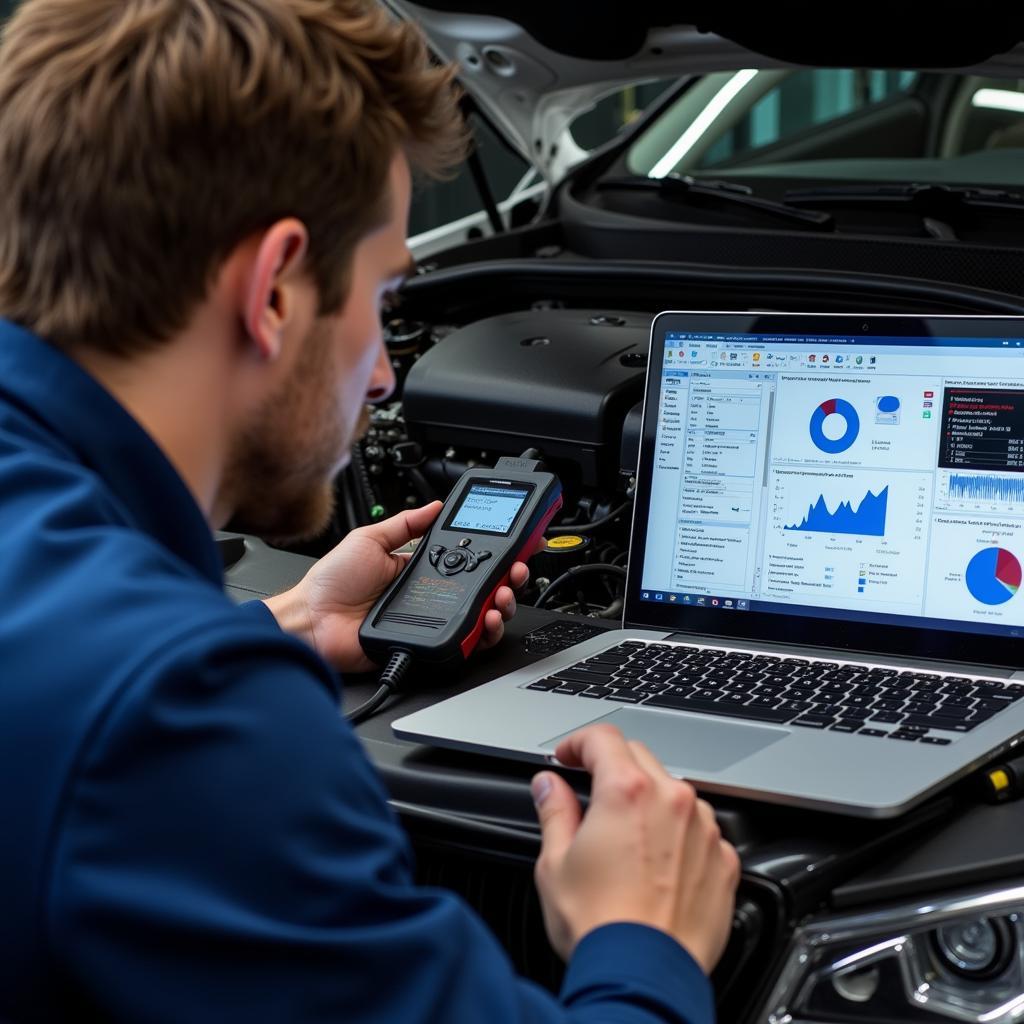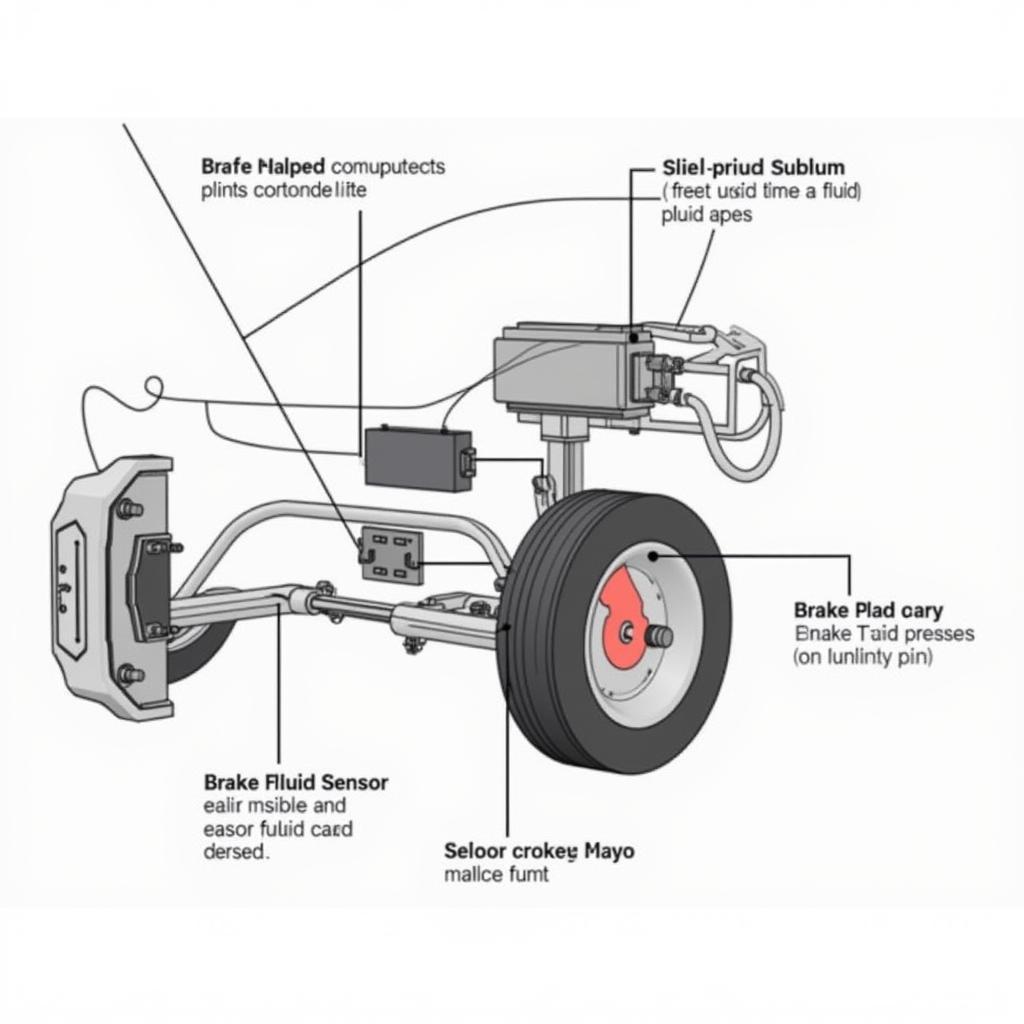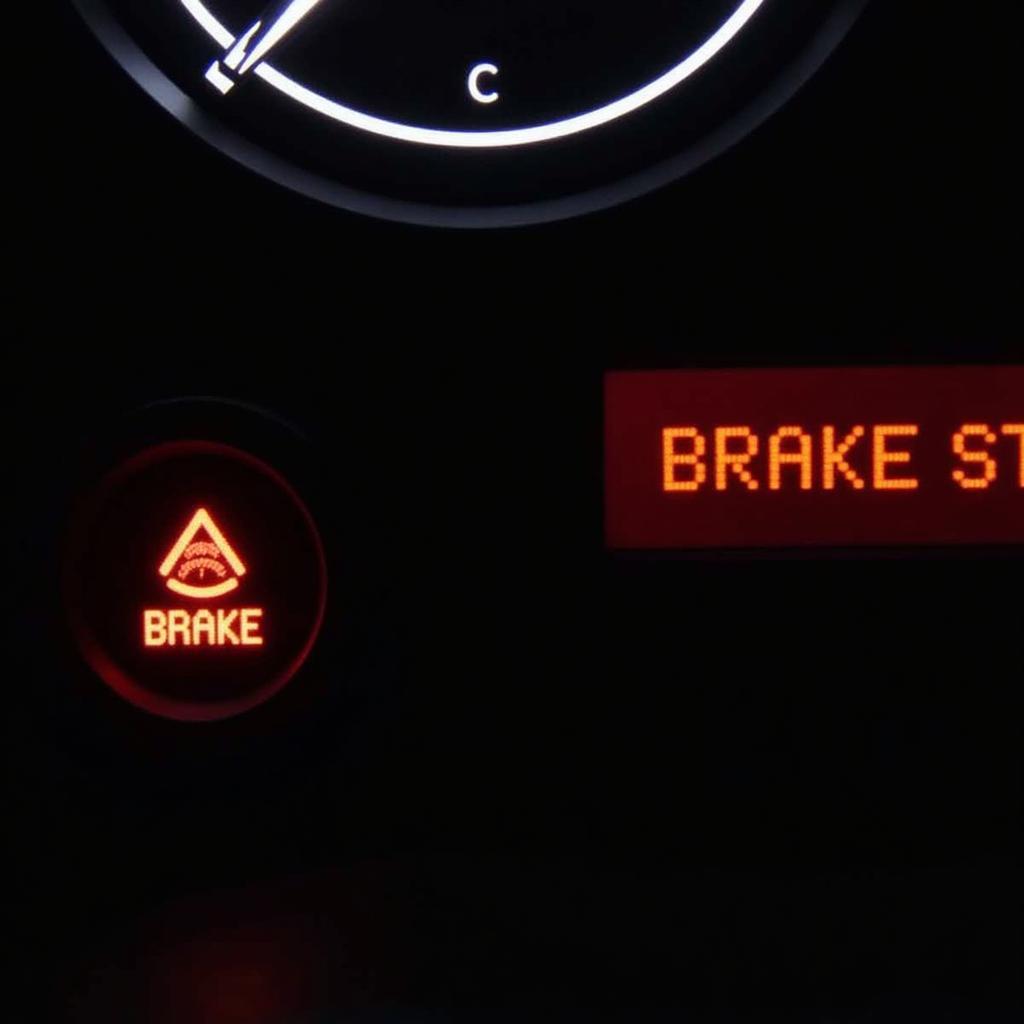Experiencing dimming headlights, a clicking sound when you turn the key, or a dead battery? These are common signs of an alternator or battery fault. Knowing how to differentiate between these two crucial components and troubleshoot the problem can save you time and money. This article provides a comprehensive guide to diagnosing and potentially fixing these car electrical issues, even remotely, through software solutions.
Understanding the Alternator and Battery
The alternator and battery work in tandem to power your vehicle’s electrical systems. The battery provides the initial power to start the engine, while the alternator takes over once the engine is running. It generates electricity to power the car’s electrical components and recharge the battery. A fault in either one can lead to a range of problems, from minor inconveniences to complete vehicle failure.
Identifying an Alternator Fault
Several signs point to a failing alternator. Dimming headlights, especially when accelerating, often indicate the alternator isn’t producing enough power. A whining or growling noise coming from the engine bay could be a sign of worn alternator bearings. If your battery frequently dies, despite being relatively new, the alternator might not be charging it properly. You can even experience issues with electronic accessories like power windows or the radio malfunctioning.
Recognizing a Battery Fault
A dead battery is the most obvious sign of a battery fault. However, other symptoms can precede complete failure. Slow engine cranking, especially in cold weather, suggests a weak battery. A swollen or leaking battery case indicates internal damage and requires immediate replacement. Similarly, a rotten egg smell emanating from the battery signifies a chemical leak and necessitates replacement. If your car’s electronics behave erratically, it can also indicate a problem with the battery’s ability to maintain a stable voltage.
Diagnosing the Problem: Alternator or Battery?
How can you determine if the problem is the alternator or battery? A simple test involves starting your car and disconnecting the positive battery cable. If the engine dies immediately, the alternator is likely the culprit. If the engine continues to run, the problem is probably with the battery. However, further diagnostic testing, including voltage measurements using a multimeter, are recommended for a definitive diagnosis. Modern cars often require specialized diagnostic software to pinpoint the exact issue.
Remote Diagnostics and Software Solutions
Advanced remote diagnostic tools and software solutions now allow for accurate assessment and even repair of certain electrical issues. These tools can access a vehicle’s onboard computer remotely to retrieve diagnostic trouble codes (DTCs), analyze sensor data, and even perform software updates. This can be a convenient and efficient way to diagnose alternator and battery faults without needing to visit a mechanic.
 Mechanic Using Diagnostic Software on Laptop
Mechanic Using Diagnostic Software on Laptop
Fixing the Problem
Once you’ve pinpointed the source of the issue, you can proceed with the necessary repairs. Battery replacement is typically straightforward, involving disconnecting the old battery and installing a new one with the correct specifications. Alternator replacement is more complex and often requires professional assistance.
Need a new key fob for your Jeep Grand Cherokee? Check out our guide on jeep grand cherokee key fob replacement. Or maybe you’re looking for a replacement key fob for your Nissan? We’ve got you covered with our nissan replacement key fob guide.
What if I don’t have the original key fob for my Chevy?
Programming a new Chevy key fob without the original can be tricky. Our guide on how to program chevy key fob without original will walk you through the process step by step. Wondering how much does a new fob key cost? We’ve researched the average costs for different makes and models to help you budget accordingly.
Expert Insight: “Modern cars rely heavily on sophisticated electronics. A seemingly simple problem like a dim headlight can be a symptom of a more complex underlying issue with the alternator or battery,” says John Smith, Automotive Electrical Systems Engineer.
Conclusion
Identifying and addressing an alternator or battery fault quickly is essential for preventing further damage and ensuring the reliability of your vehicle. By understanding the symptoms, using diagnostic tools, and considering remote software solutions, you can effectively troubleshoot and resolve these common car electrical issues.
Expert Insight: “Regular maintenance, including battery testing and alternator inspections, can prevent many common electrical problems. Preventative maintenance can save you money and headaches down the road,” says Jane Doe, Certified Automotive Technician.



